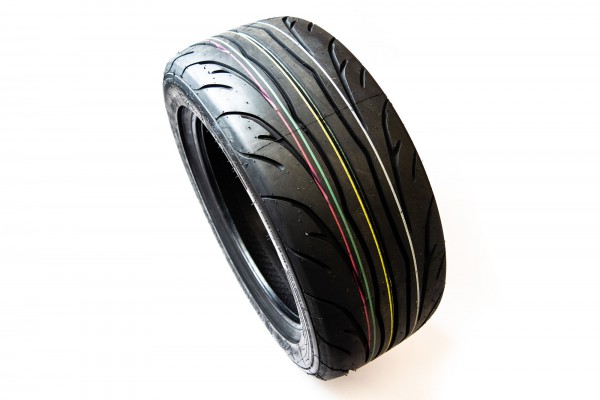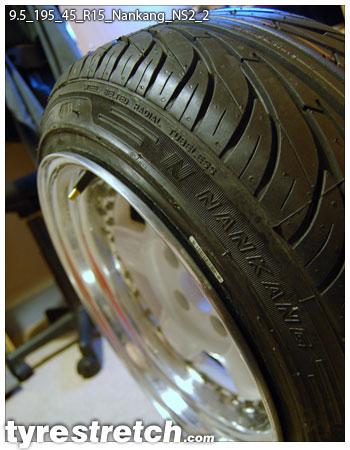
But as you can see from the above lateral g-force data, there isn’t a lot separating these tires with respect to cornering g-forces, but you can see how the Nankang AR-1 tended to generate peak g’s in the later part of each corner, while the Toyo R888R tended to peak early in the corner and the Maxxis RC-1 fell more in the middle with respect to max grip through each turn. Impressively, given the relatively mild ambient and track temperature, all three tires consistently generated 1.3g or more in the corners, with the Nankang AR-1 (Red line) generating a slightly higher peak of 1.41g as compared to the Maxxis (Blue line) and Toyo (Green line) max reading of 1.39g. The Toyo R888R were also less consistent than the Nankang but more consistent than the RC-1, perhaps in part due to my familiarity with the compound, with lap times ranging from 1:20.0 to 1:20.4.
#Nankang ns2 full#
This resulted in the RC-1 lap time spread covering a full second (from 1:19.3 to 1:20.3) from best to worst lap amongst its data set. This single fastest lap time only tells part of the story, however, since over the two sessions the Nankang AR-1 were remarkably consistent, with lap times clustered tightly in the 1:19.1 to 1:19.3 range, while the Maxxis RC-1 were less consistent because of their tendency to understeer when pushed hard on corner entry and also due to their lack of feel or feedback at the limit of available grip. The Toyo R888R was further back, almost a full second behind the AR-1. As you can see from the above summary data, it was a close fight between the Nankang AR-1 and the Maxxis RC-1 for fastest lap of the day, with the AR-1 edging out the RC-1 by a little over a 10th of a second. Here is an iPhone image more clearly showing the stacked height of the tires, where you can see the Maxxis (on the left) are widest, followed by the Toyos (in the middle), and the Nankangs (on the right).Īlright, let’s get right down to the nitty gritty. The wide angle lens we shot the video with distorts the image the further you get from center, so the tires near the edge of the frame get stretched and look much wider than they are.

In the video at the bottom of this story, we’ve received a lot of questions in the comment section about which tire runs widest. Above are the tire temp data sheets for the fastest session on each tire. I should also mention that we did a scrub-in session on each set of tires brand new tires (all size 265/35R18) that consisted of slowly putting heat into the tires over 3 laps and then adjusting tire pressures at the end of the session based on tire temperature readings (collected using a probe-type pyrometer).Īfter that we did two full Time Attack style session on each set of tires, consisting of one warm-up lap, three hot laps, and a “cool down” lap where I still pushed very hard to keep temperature in the tires so that we could collect the most accurate temperature data possible when pitting hot.

As the tire pyrometer told us, we were able to just get the tires warm enough to be considered in their optimal range (60-80C is typically the temperature sweet spot for semi slicks like these). Weather conditions at TMP were sunny and windy with a high of 14C, with test conditions being very consistent throughout the day. Having used the R888R for a couple seasons on our K-swapped ’99 Honda Civic coupe as well as on the Mullet Mustang (a track-prepped ’05 GT), we wanted to experience some other options in this category and see how they compare.

A lot of planning had to go into it, including borrowing a couple of sets of 18×9.5” wheels, having our main man Riley Sexsmith over at NV Auto mount up all the 265/35R18 rubber, and prepping our supercharged 2013 Scion FR-S for what would be a gruelling day at Toronto Motorsports Park, a 2.2-km, 11-turn road course where we’ve done thousands of laps over the last 15 years or so.įor this test, we wanted to see how the Nankang AR-1 and Maxxis RC-1 compared to the Toyo R888R, all 100 tread wear (UTQG) semi-slicks that are perfect for track day action, be it Time Attack, Road Racing, HPDE or recreational lapping.

That said, we’ve never track tested three different tires all on the same day on the same car, so this was an action-packed day for us. Tire testing is something we’ve been doing for a very long time now, both as racers and former car magazine editors.


 0 kommentar(er)
0 kommentar(er)
